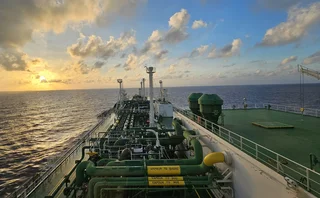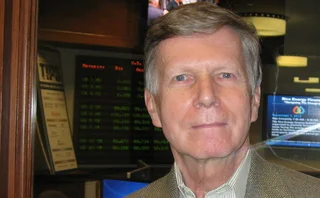Commodities Trading and Investment Summit: conference highlights
Commodity contest
After the break, the conference split into an energy stream and a softs and metals stream.
In energy, senior research fellow at the Oxford Institute of Energy Studies, Patrick Heather, warned the conference that the US shale gas revolution could not be repeated in Europe, where costs were much higher and geological resources more limited. There would be no significant shale gas volume produced in Europe before 2020, he said.
Sabine Schels, senior director and global strategist at Bank of America Merrill Lynch (BAML), next answered the question of whether we were going to see a repeat of 2008 in oil markets. She noted that although the absence of the Organisation of Petroleum Exporting Countries as a limiter of upward risk made a 2008 repeat more likely, it was still not BAML’s main view. However, the second round of US QE helped push all commodities upwards, especially oil.
Schels argued that negative real interest rates generally led to high and bubbly oil prices. Conversely, India’s raising of interest rates by 50 basis points led to the sell-off in commodities in May.
The world was fast losing its spare productive capacity in oil, Schels said, with an obvious supply/demand imbalance. If Libyan production doesn’t return in 2012, we will eat into another one million barrels per day of spare capacity.
Next, Henrik Hasselknippe, managing director of product development at Green Exchange, provided a look into the future of carbon trading. He noted some upcoming jurisdictional clashes in Europe, while the UK carbon allowances are treated as normal property rights. The Markets in Financial Instruments Directive review might classify carbon credits as financial instruments even though, at the moment, they are treated differently in each EU country.
After lunch, Tim Greenwood from the European Energy Exchange (EEX) expounded on how power could be traded as an alternative asset class. While investors had been scared away in the past by the extreme volatility and special characteristics of power markets, there was an increasing number of financial participants on EEX, he said.
Wind generation was having an unpredictable effect on short-term power markets, Greenwood said, and through the tight link between spot and futures prices, it has impacts on long-term price signals as well.
ETF effect
The effect of exchange-traded funds on broader commodity markets is a hot topic nowadays. Speaking on this was John Hyland, chief investment officer at US Commodity Funds –manager of the popular US Oil Fund and US Natural Gas Fund.
Hyland said it was ridiculous to assert that physically-backed gold ETFs were ‘hoarding’ gold, when they were the only market participants who were obliged to sell you some of their gold holdings whenever you wanted.
After a coffee break, Jason Lejonvarn, strategist at Hermes Fund Managers, took an analytical look at how well commodity investments work as a diversifier. He said, as a rule, commodities performed well late in the business cycle, while equities did well early in the cycle. In 2008, commodities had a six-month lag before they were brought down by the financial crisis, Lejonvarn said.
Result of regulation
The day was rounded off by a lively panel discussion on how new regulation would change trading and investment.
Homayoon Arfazadeh reminded participants that new regulation on market manipulation didn’t require proof of intent, just proof that a position was causing distortion. This would make it much easier to prosecute for manipulation.
Hyland said airlines and every other end-user would argue for an end-user exemption, even when it didn’t make sense. However, he had serious doubts about the timeline for implementation, which was causing serious uncertainty for market participants. “We’ll be back here in June 2012, and we still won’t know what the rules will be,” he said.
More on Risk management
LNG trading strategies set to change amid major market shifts
The global LNG market is on the brink of significant changes set to alter trading dynamics and market behaviour, say analysts
Why commodity finance is ripe for stablecoin
Digital currency brings cost efficiencies to financing, but its real benefit to commodity firms lies in making huge pools of new capital available, write Jean-Marc Bonnefous and Ronan Julien
US shutdown leaves commodity traders without key data
Commodity traders are ‘flying blind’ without Commitment of Traders reports
Energy Risk at 30: Learning from the past
Energy Risk looks back at the seminal events and developments that have shaped today’s energy markets
Past disasters can prove the value of energy risk management
Analysing failures and losses at energy firms can underscore the value of consistent, high-quality risk management
How quants shaped the modern energy markets
The business models of today’s utility firms are built on quantitative analysis, but the introduction of these techniques in the 1990s was far from smooth
Interview: Vince Kaminski
Market veteran Vince Kaminski discusses the biggest risks to energy firms today and whether risk teams can ever prove their value
Mounting risk prompts refocus on integrated energy risk management
Energy firms are facing heightened risk due to shifting geopolitics, climate change and the energy transition. As market, credit and enterprise risks ramp up, the need for improved integrated risk management is growing, say risk managers







